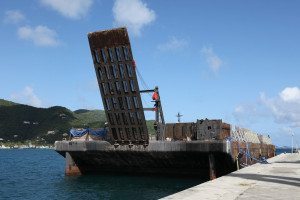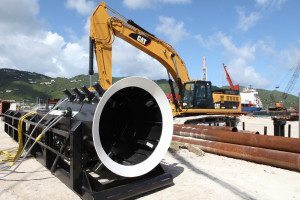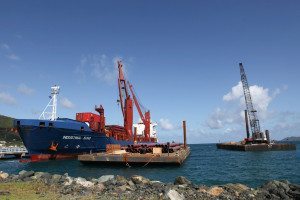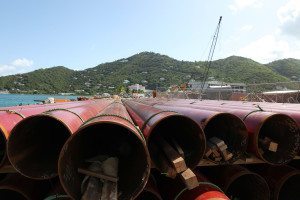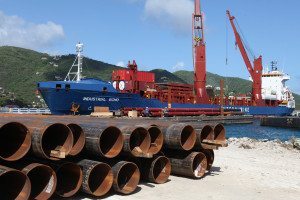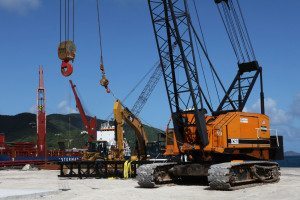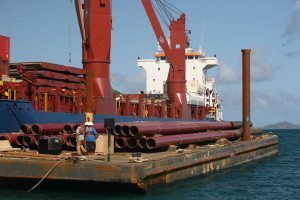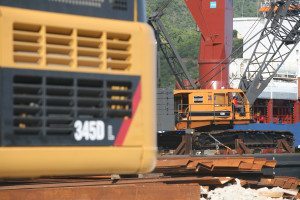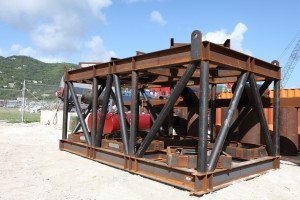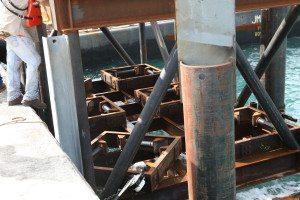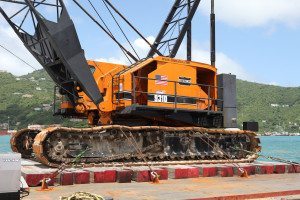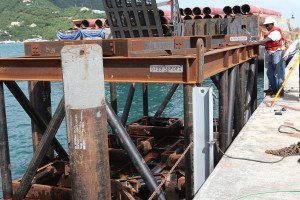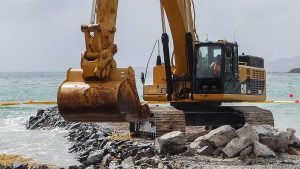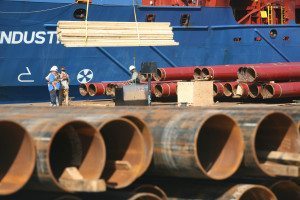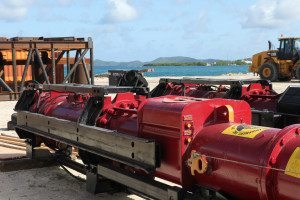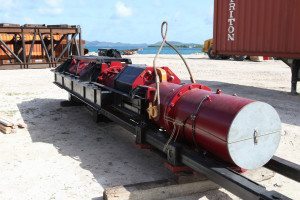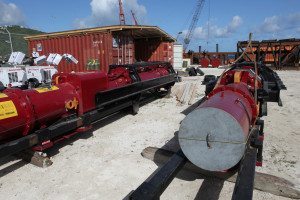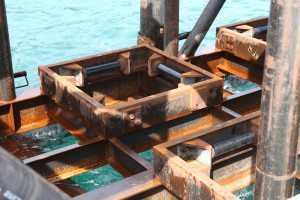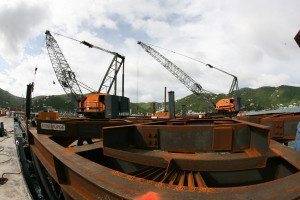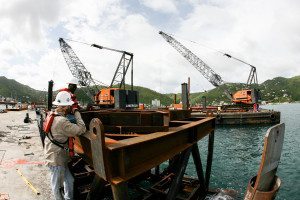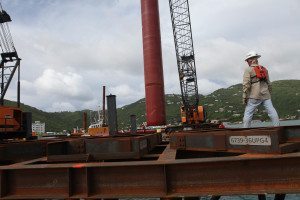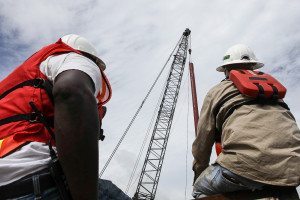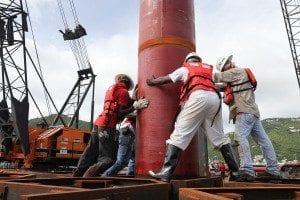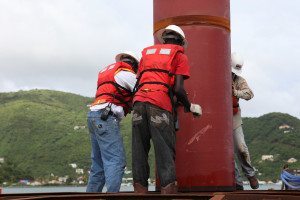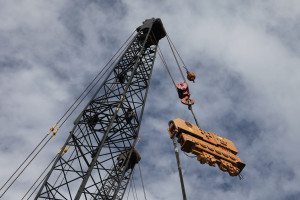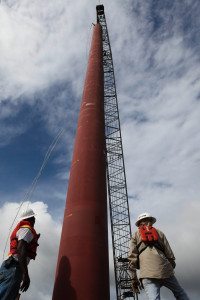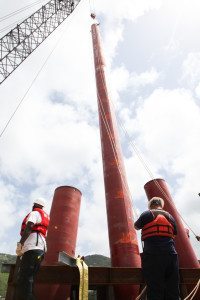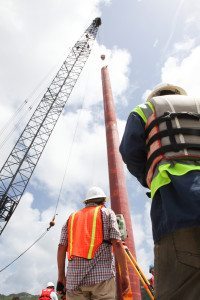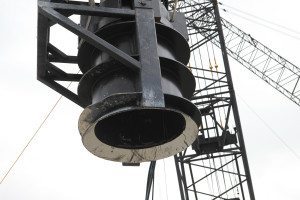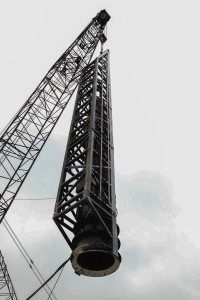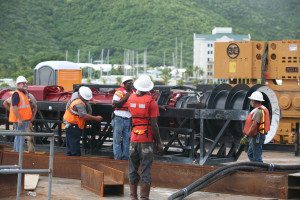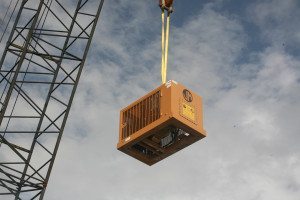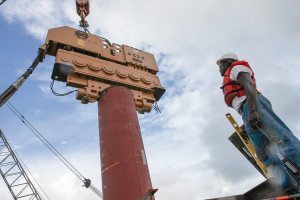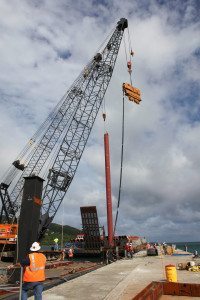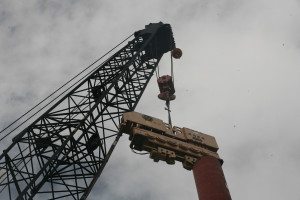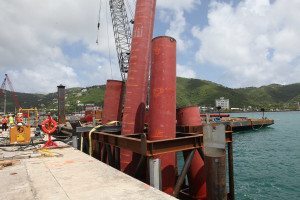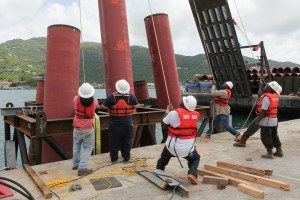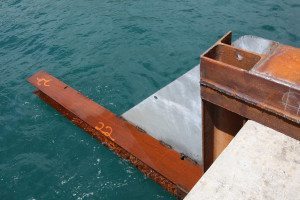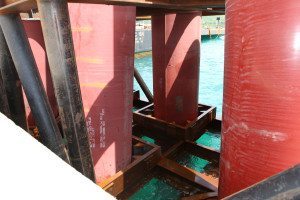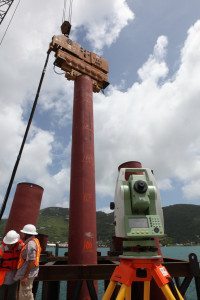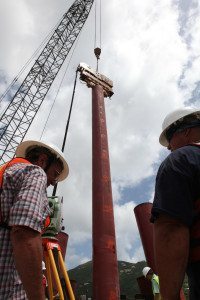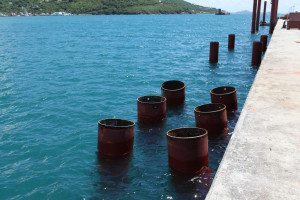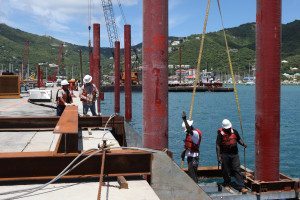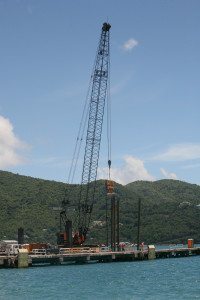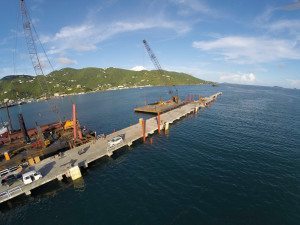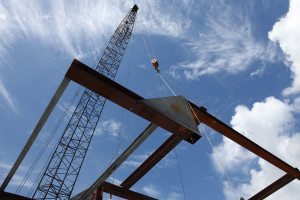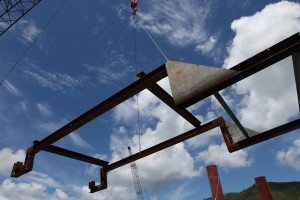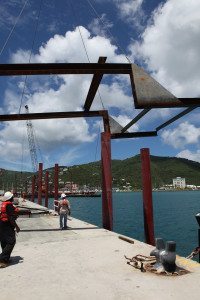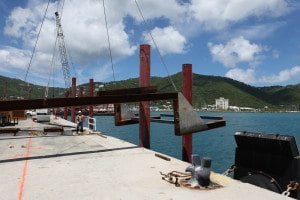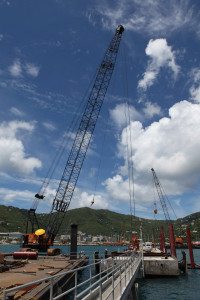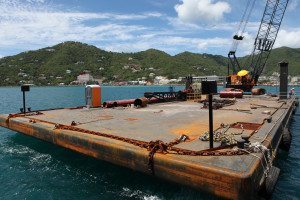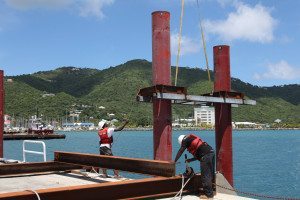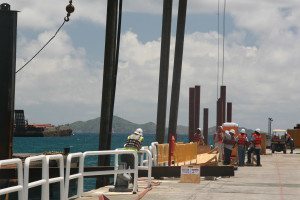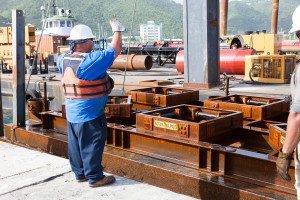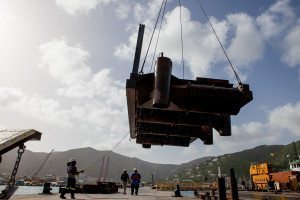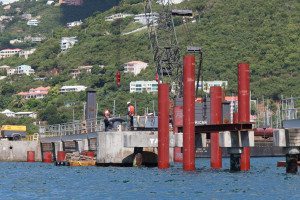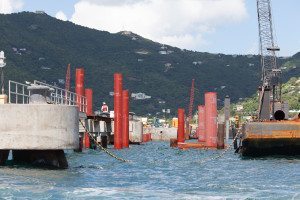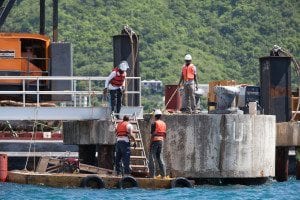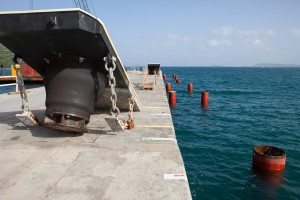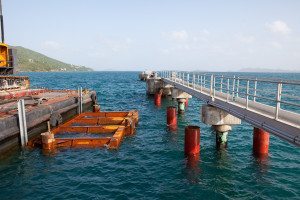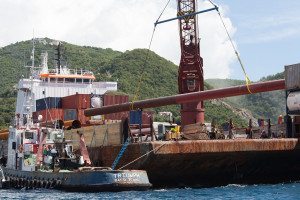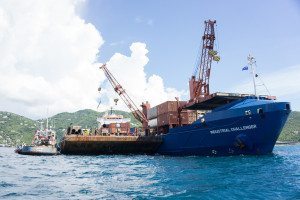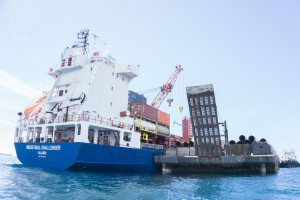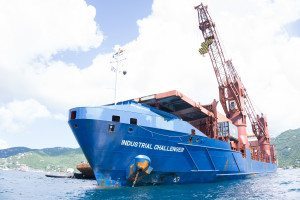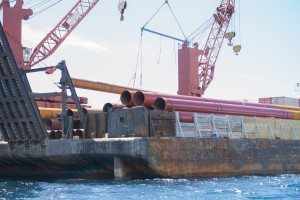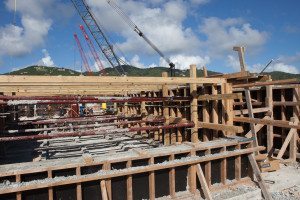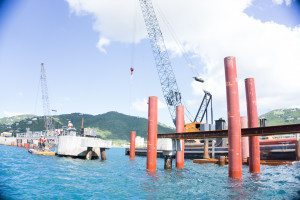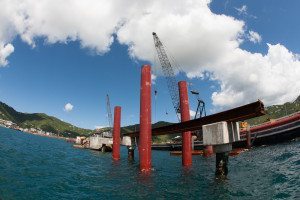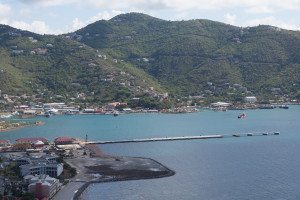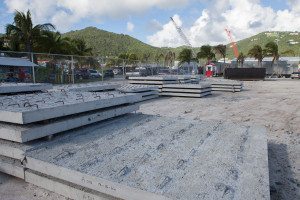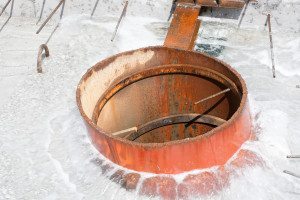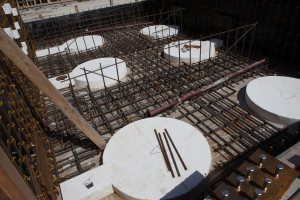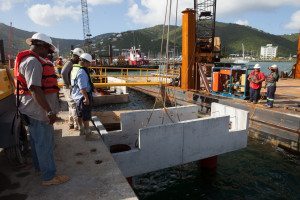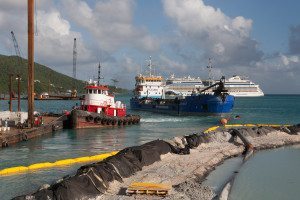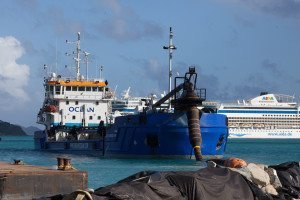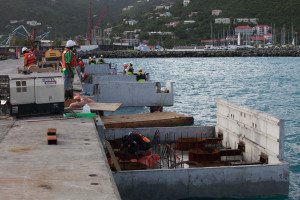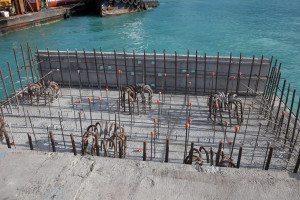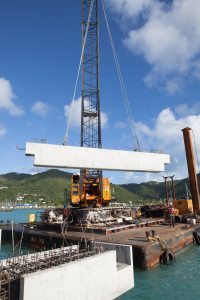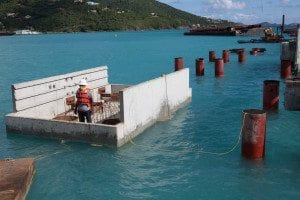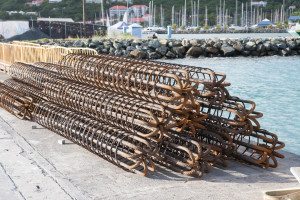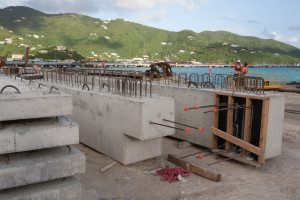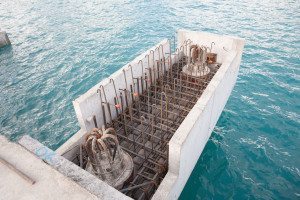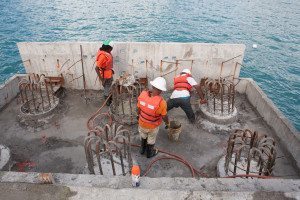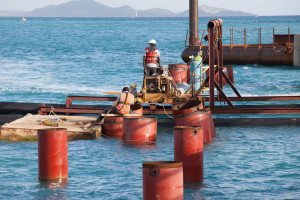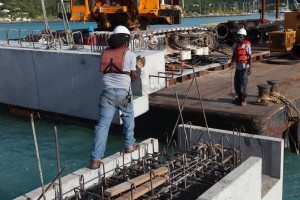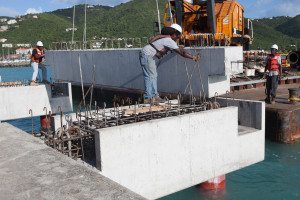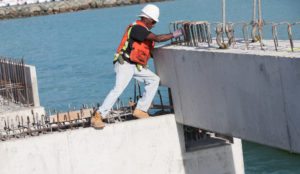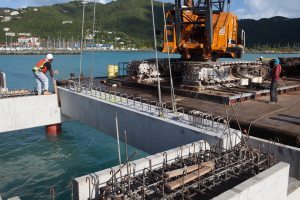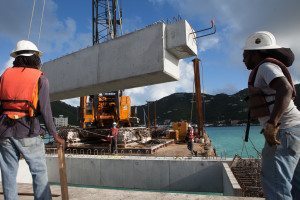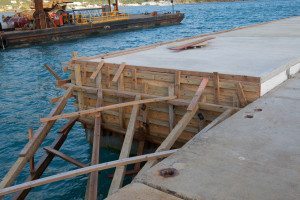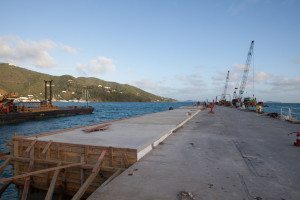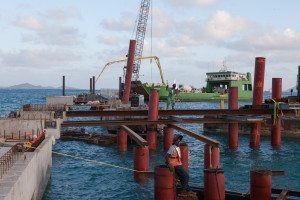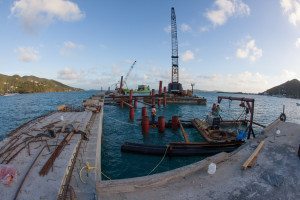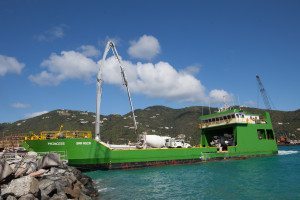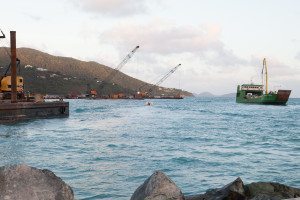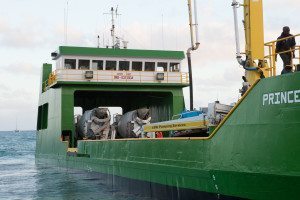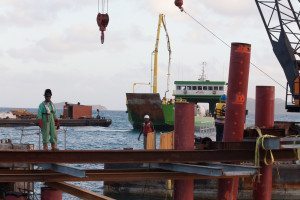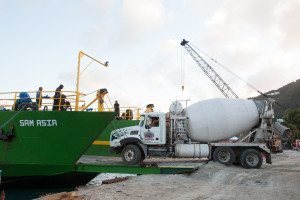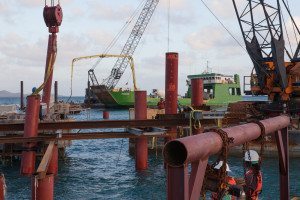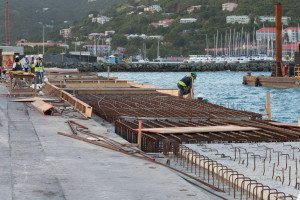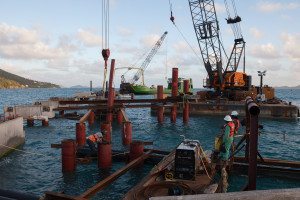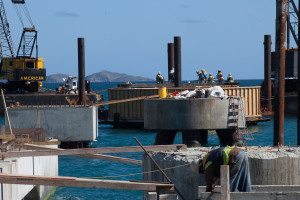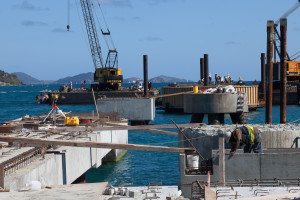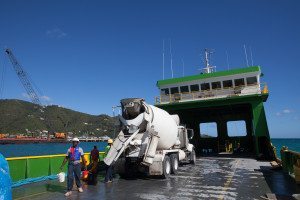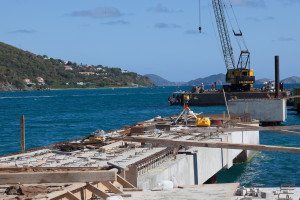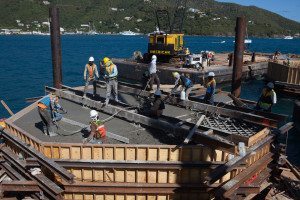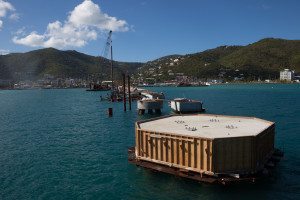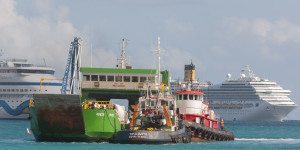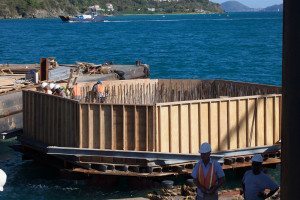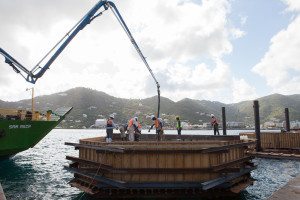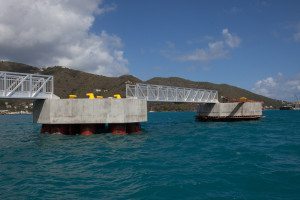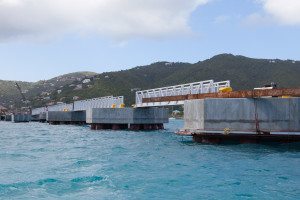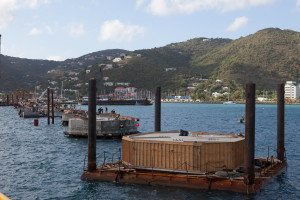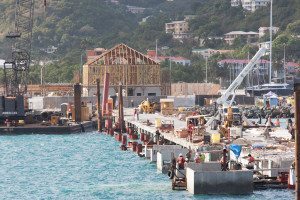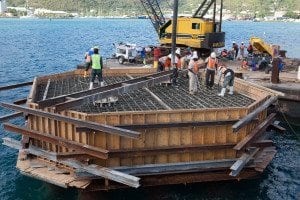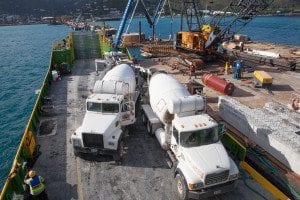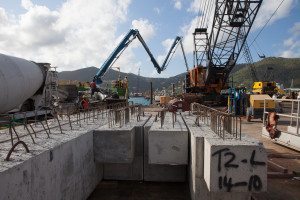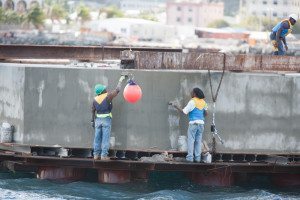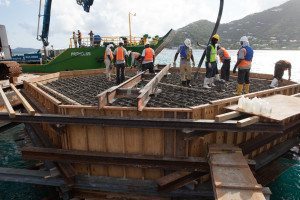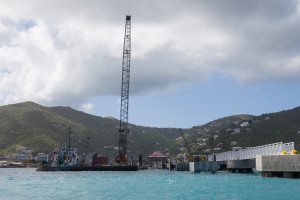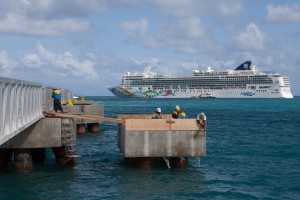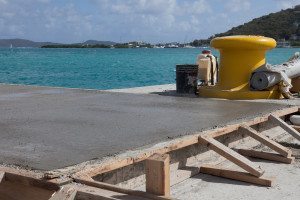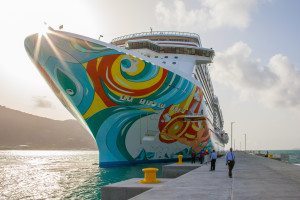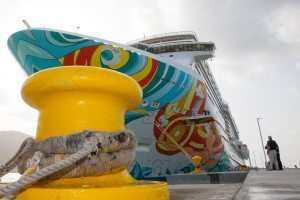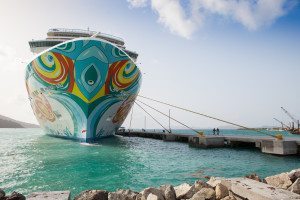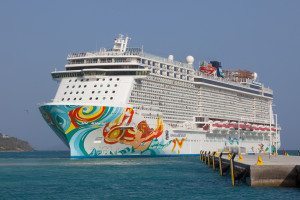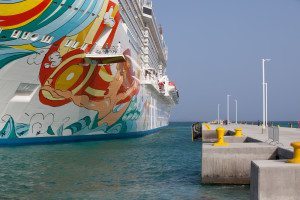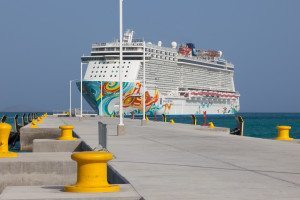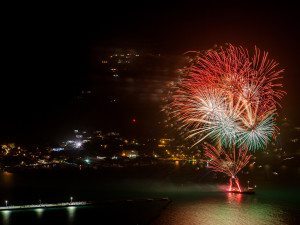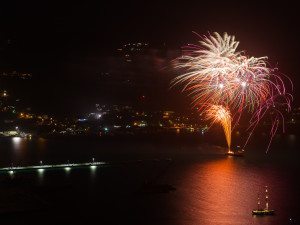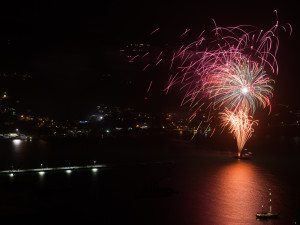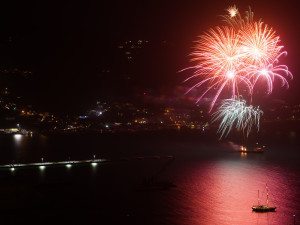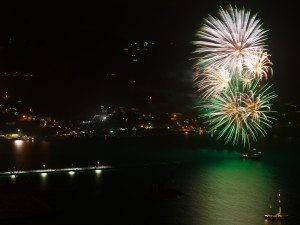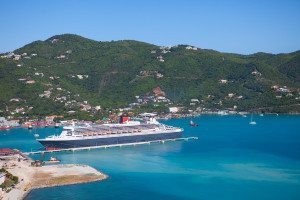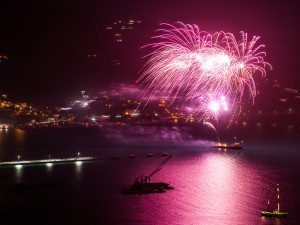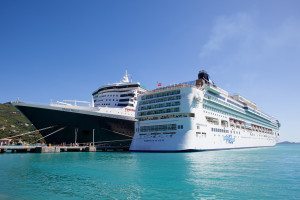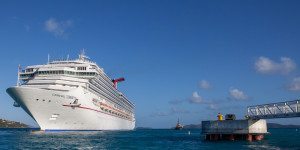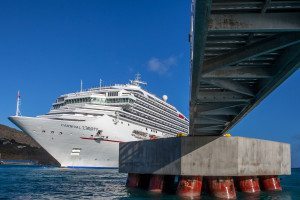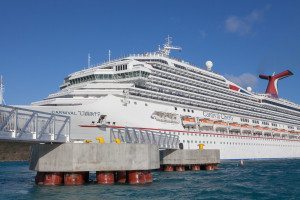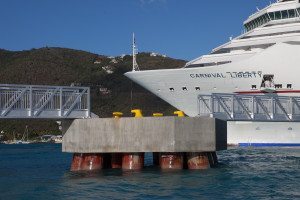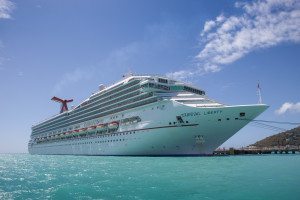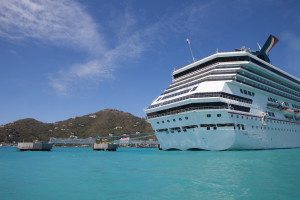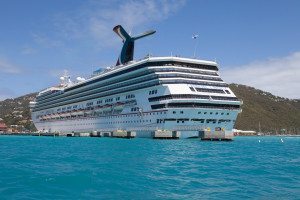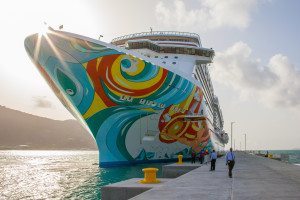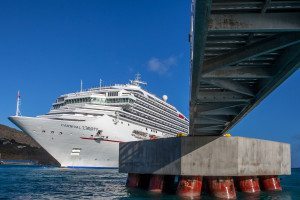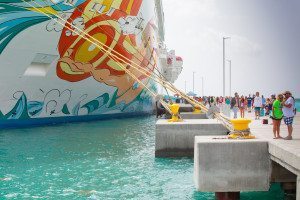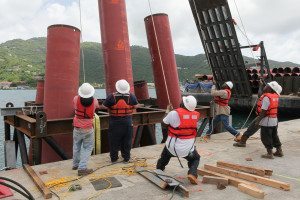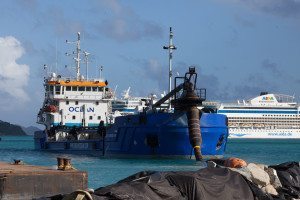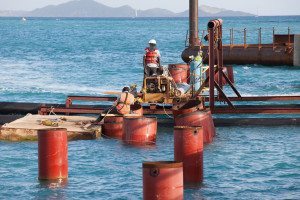BVI CRUISE PIER EXPANSION
SHARE:
The BVI Ports Authority, operators of the cruise pier, called for the lengthening and widening of the existing cruise pier to accommodate two ships of 180,000 gross registered tonnage each.
The project, a major Caribbean cruise pier expansion, included pier widening, extension, and deck topping; shoreline rehabilitation; channel dredging and land reclamation in Road Town, the capital of the British Virgin Islands on the island of Tortola.
The cruise pier was lengthened to 1,039 feet from 753 feet, with three breasting and mooring dolphins adding 273 feet, giving a total of 1,312 feet of berthing space. This lengthening of 559 feet was required to accommodate door locations on larger mega-cruise ships.
The pier was also widened from 32 feet to 60 feet wide.A design and build project, Meridian opted to keep the existing cruise pier in place and build over it using a precast concrete system.
Design approval was given four months after the contract signing, giving Meridian nine months to deliver the pier for the docking of the first cruise ship.
Because of the tight timeframe and no leeway for errors, raw materials were shipped in and construction of the precast pile tubs, caps and slabs, rebar cages, and all other steelwork fabrication was undertaken locally on-site.
At the peak of construction, over 50 workers pulled from the Caribbean and Louisiana, USA, were on-site.In an extensive mobilization process, Meridian sourced and acquired the full inventory of machinery and equipment necessary to execute the project.
In addition to large hydraulic tracked excavators, wheel loaders, and backhoes, four cranes (two 225 ton) were used. A 250-foot scow barge and 160-foot spud barges were used to handle the demands for pile-driving spreaders which were served by project tugs and skiffs.
The barges were configured to house the cranes, diesel and hydraulic pile and vibro hammers, the rigs and compressors capable of driving the 48″ steel piles. The smaller 120 foot deck barges were used to transport supplies and equipment to specific locations.The two piling workhorses were the APE Model 200-6 Vibratory Driver Extractor; and the APE Model D70-52 Single Acting Diesel Impact Hammer.
With the landslide development running in conjunction with the marine works, storage was at a premium, with all available space being used for the precast construction, the steel pipe piles needed for the project arrived in two shipments and were stored at sea on a barge in Road Harbour, and ferried to the pier works as needed.
A total of 198 125ft to 145ft steel pipe piles were driven up to 100 feet into the seabed to support the concrete deck extension and construction of the new dolphins.
Fourteen pile caps were constructed on top of groups of six 36” piles. 56 precast steel reinforced slabs and forms were constructed on-shore to make the deck topping; each was installed with barge and crane.The mooring dolphins were constructed on a group of sixteen 48” piles. For each dolphin, 160 cubic yards of concrete was poured.
During the pour process, a procession of concrete trucks were ferried out to sea on a roll-on, roll-off barge and a boom concrete pump used to fill the pile caps.For the dredging and land reclamation, a trailing suction hopper dredger was brought down from Ocean Dredging in Quebec, which removed in the order of 140,000 cubic yards of sand, sediment and hard coral shoal, all of which was used for the land reclamation.
Hurricane-belt construction is fraught in the summer months of hurricane season and the passage of Tropical Storm Gonzalo threw a spanner in the construction works.
The hurricane passed northeast of the BVI in the early hours of Tuesday, October 14 with minimal impact on land but not before Meridian had activated its hurricane plan moving the storage barge with piles to Peter Island 6 miles away and temporarily decommissioning the three barge spreads with pile driving cranes, and repositioning them behind a breakwater in Road Harbour.
However, nine months after construction started, with all the catwalks, breasting and mooring dolphins and the north eastern side of the dock ready for berthing, the 952-foot Carnival Cruise Line ship, Carnival Liberty, was the first cruise ship to dock at the new cruise pier facility one month ahead of completion of both sides of the dock.
The Cruise Pier was officially opened with speeches and fireworks a month later with the inaugural call of the Norwegian Getaway, cruise ship of the Norwegian Cruise Line and at the time of its christening in January 2014, it was the world’s ninth largest cruise ship.

